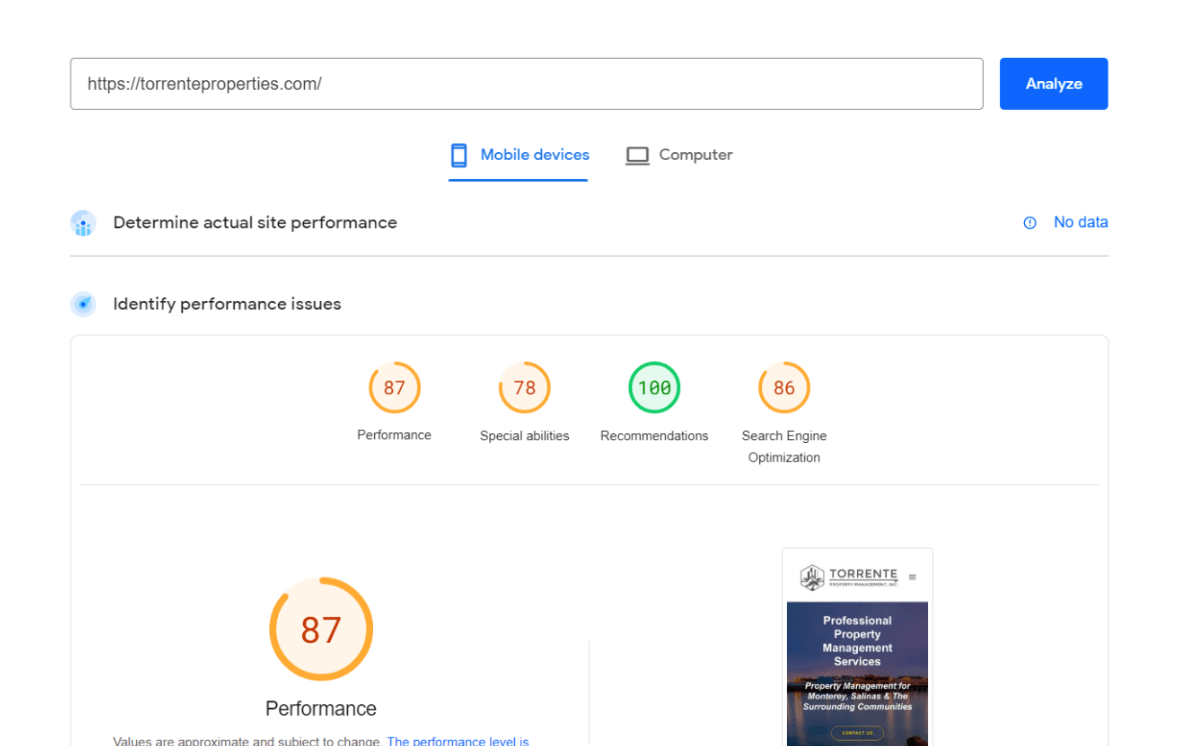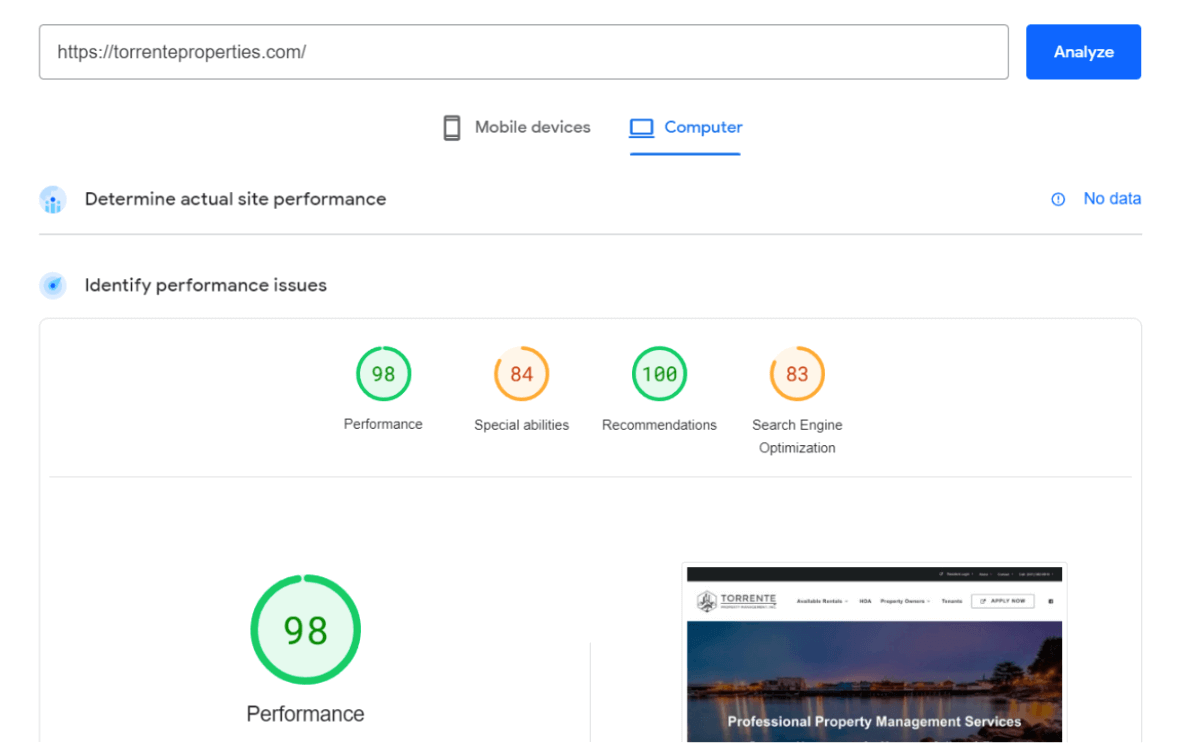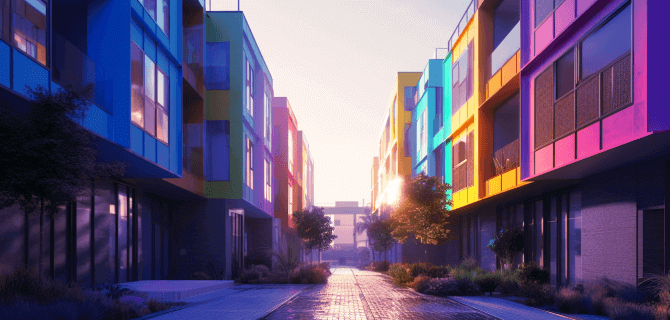Torrente Property Management serves Monterey, Salinas, and nearby communities. Their WordPress real-estate site felt slow, especially on mobile, hurting engagement and local SEO. We audited the stack, identified Core Web Vitals bottlenecks, and executed targeted fixes as part of our WordPress optimization services. This project focused on Core Web Vitals (LCP, INP, CLS), lowering TTFB, and eliminating render-blocking assets.
Problem & Context
Google PageSpeed Insights reported weak scores: 37/100 on mobile and 75/100 on desktop, with unstable Core Web Vitals. Real-estate templates (listing grids, large photo galleries, and map/iframe embeds) amplified page weight and main-thread work.We validated lab data with Lighthouse, CrUX field data, and GTmetrix to separate render-blocking issues from server/network delays. For mobile specifically, we prioritized faster first render and interaction as outlined in our mobile optimization for WordPress websites.
Diagnostics
- Lab tools: PageSpeed Insights (Lighthouse), GTmetrix for waterfall and blocking time.
- Field signals: CrUX for real-user LCP/INP/CLS, plus Search Console Core Web Vitals reports.
- Bottlenecks observed: long JS execution, unused JavaScript/CSS, outdated image formats, non-critical widgets loading at start, and animations on mobile impacting metrics.
Fixes Implemented
Code & JavaScript Strategy
We reduced render-blocking work with critical CSS, defer/async for non-critical JavaScript, and trimmed unused CSS/JS. We added preconnect / preload / dns-prefetch for key origins to accelerate resource discovery. We also audited plugins to remove bloat and ensured responsive layout rules to stabilize paint and reduce CLS.
Image Pipeline
We converted heavy assets to WebP, enforced responsive image sizes (srcset, width/height attributes), and enabled lazy-loading so off-screen media doesn’t block first render. This lowered page weight significantly without visible quality loss.
Caching, Hosting & TTFB
We tuned page and browser caching, and recommended server-side/object caching for dynamic fragments. CDN rules minimized round-trips and improved edge delivery. Combined, these changes reduced TTFB and improved time-to-first render for mobile users.
Embeds & Third-Party Widgets
We lazy-loaded iframes and embeds (e.g., maps, videos) and delayed non-essential third-party scripts until user interaction. This cut main-thread work at startup and stabilized LCP/INP.
Mobile UX Adjustments
Animations on mobile were disabled or gated behind interaction as part of our Google PageSpeed optimization to avoid “continuing load” signals that depress PageSpeed/Lighthouse scores without adding real UX value.
Results
After implementation, we re-tested with PageSpeed Insights and GTmetrix. Performance improved substantially across both mobile and desktop.
Mobile:


As we can see, Core Web Vitals and productivity indicators have increased significantly. Let’s compare the indicators before and after optimization:
| Core Web Vitals | Scores before WordPress Website Optimization | Scores after WordPress Website Optimization |
| Desktop Google Pagespeed | 75 | 98 |
| Mobile Google Pagespeed | 37 | 87 |
| Mobile LCP (Largest Contentful Paint) | 14,0 sec | 3,5 sec |
| Desktop LCP (Largest Contentful Paint) | 2,9 sec | 0,8 sec |
| Mobile FCP (First Contentful Paint) | 4,7 sec | 1,9 sec |
| Desktop FCP (First Contentful Paint) | 1,2 sec | 0,5 sec |
| Mobile Speed Index | 10,7 sec | 4,1 sec |
| Desktop Speed Index | 2,8 sec | 1,6 sec |
Basic optimization made it possible to significantly improve the user experience and the website’s SEO. As a result, users do not wait long for the site to load, and it is easier for search engines to index pages and return them. If you want to speed up your WordPress website or WooCommerce online store, write to us. We will check the site’s condition and offer optimization options.











